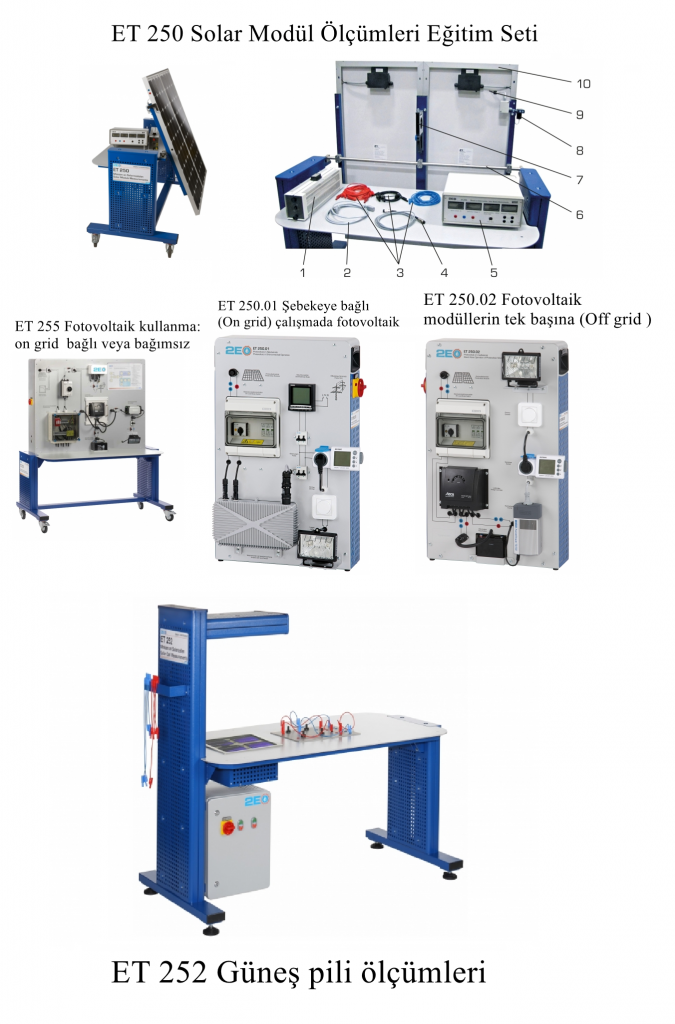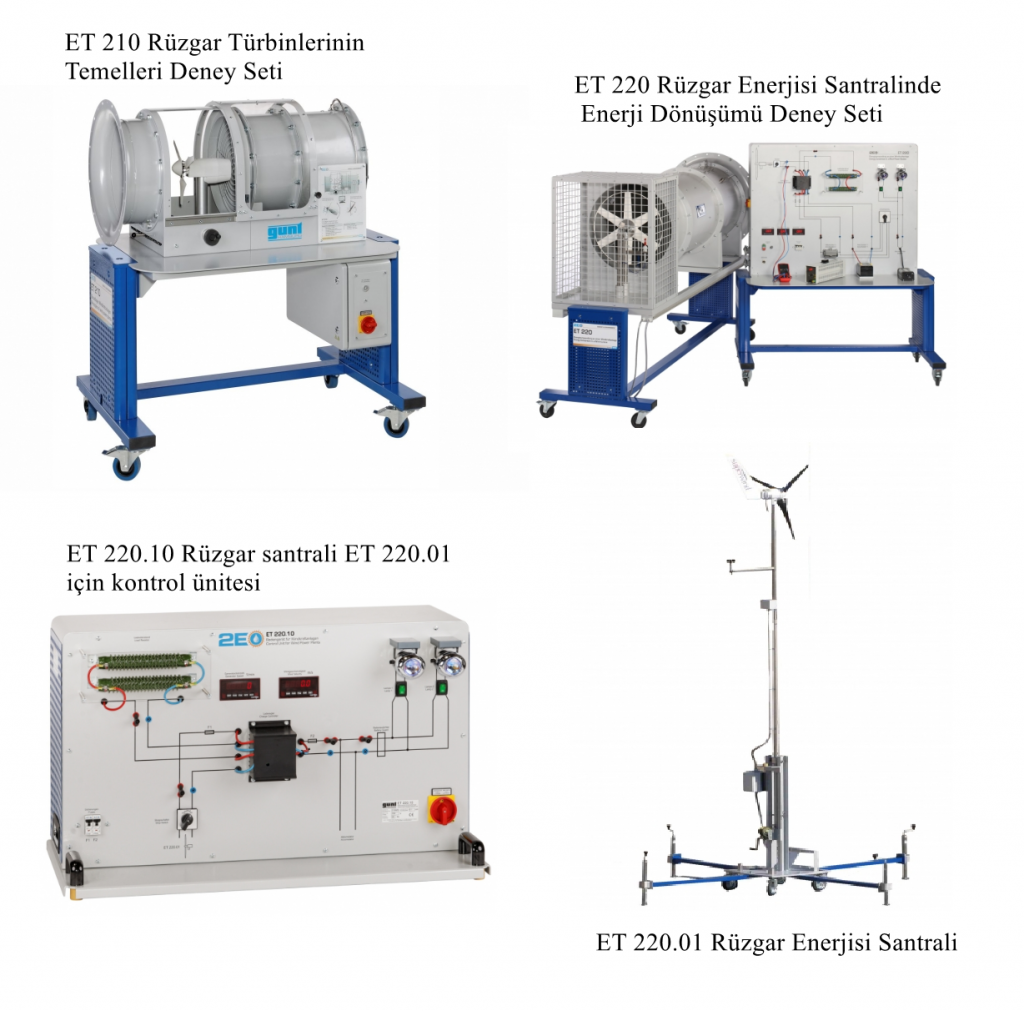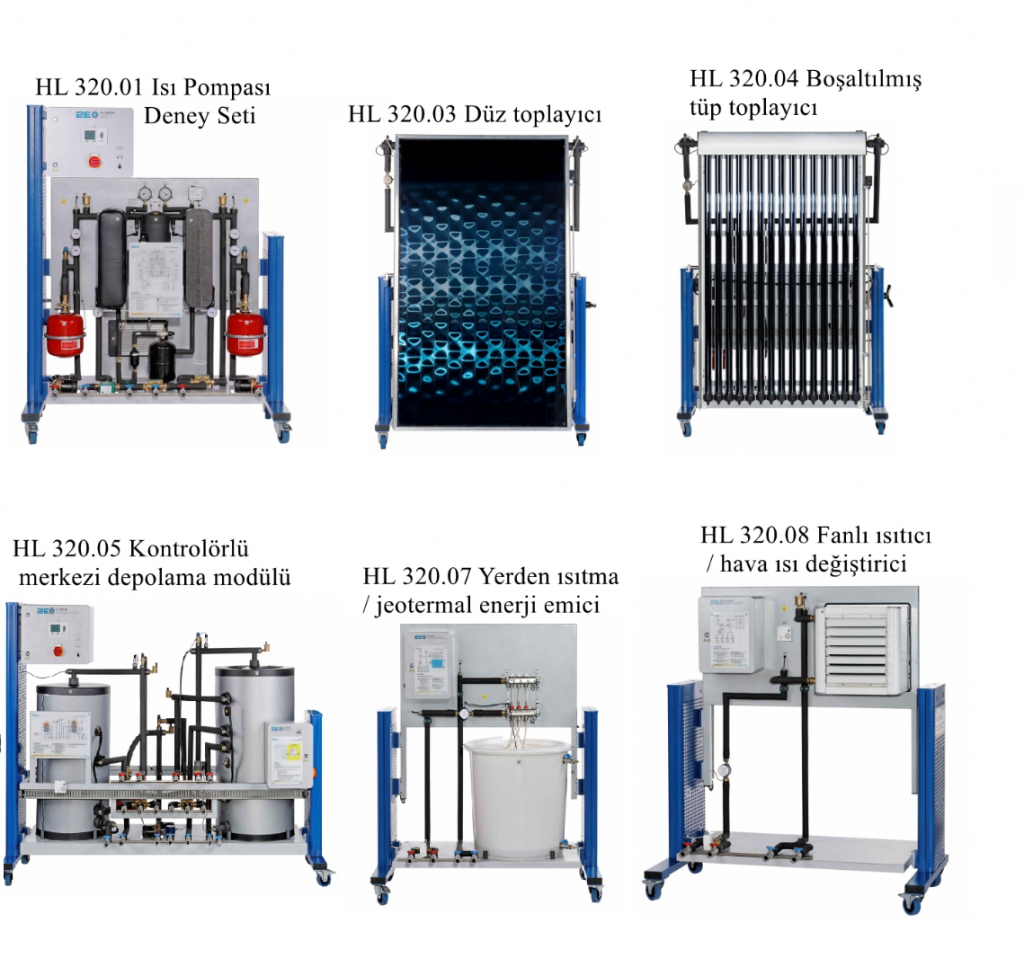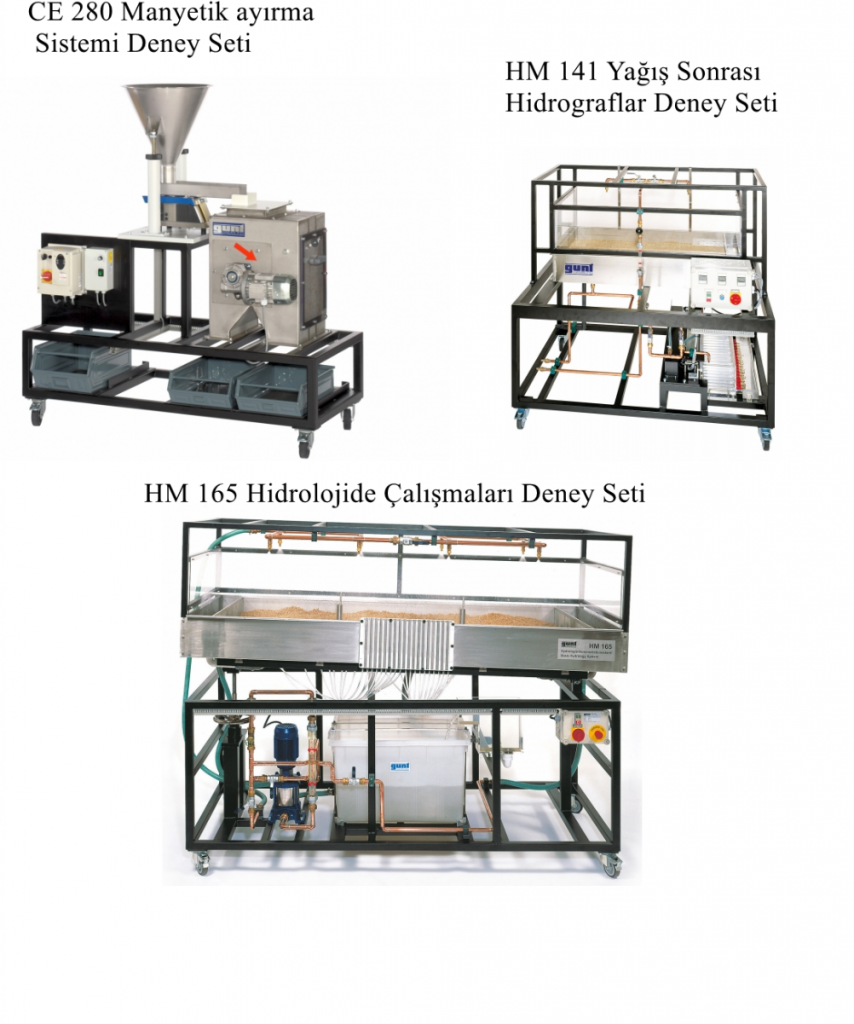
ET250
Photovoltaic solar modules convert sunlight directly into electrical current and are therefore an ideal component for renewable energy supply. Typical solar modules from the field of photovoltaics are made of several silicon solar cells connected in series.The ET 250 trainer contains two such solar modules. The inclination of the modules can be adjusted. Cables can be used to connect the two modules in series or in parallel. A slide resistor simulates varying loads. Thus the slide resistor makes it possible to record current-voltage curves.
ET255
Photovoltaic solar current can be used to feed into a public power grid (grid-connected operation) or for local consumption (stand-alone operation).The ET 255 trainer allows typical electrical components to be studied for both possible uses of photovoltaics under different operating conditions.
ET250.01
Feeding electricity from photovoltaic solar modules into the mains grid requires several special system components. These components enable conversion and capture of the solar electricity and ensure system safety.The ET 250.01 unit contains these components and is conceptualized as an extension for the ET 250 trainer.
ET250.02
Stand alone operation of photovoltaic modules excludes any access to a public mains grid. This kind of photovoltaic usage is chosen typically for applications in remote locations.ET 250.02 is conceptualized as an extension for ET 250 and provides typical components for stand alone photovoltaic systems. This includes a charge controller, an inverter and an accumulator. These components enable conversion of the solar electricity, provide supply on demand and ensure system safety.
ET252
Illuminance, temperature and electrical load are the key variables affecting photovoltaic solar cells. ET 252 allows you to conduct targeted experiments in order to understand the basic principles and practically relevant effects on cells and modules.

ET210
In modern wind power plants, the power output from the wind is adapted to the changing wind conditions. In the strong wind range, power output is limited to protect the turbine. The rotor blade adjustment serves this purpose. By adjusting the angle, this changes the forces acting on the rotor blade. In the normal wind range, power consumption is optimised by means of variable speed generator systems.ET 210 demonstrates a wind power plant with rotor blade adjustment and variable speed generator.
ET220
ET 220 is used to study how kinetic wind energy is converted into electrical energy.The experimental plant consists of a wind tunnel and a control unit. The wind tunnel contains a wind power plant in laboratory-scale and an axial fan. A rotor and a generator are the core elements of a wind power plant. The control unit includes the control elements for the axial fan, the storage components for the electrical energy and the electrical consumers.
ET220.01
The yield of a wind power plant depends on the prevailing wind velocities and the usability of the electricity generated. In order to study the operation of a wind power plant under real weather conditions, ET 220.01 was developed. ET 200.01 can be operated with the trainer ET 220 or the control unit ET 220.10.
ET220.10
The generation of power in wind power plants covers a significantly increasing proportion of energy needs worldwide. Both the conversion of the kinetic wind energy and the use and storage of the generated electrical power are crucial aspects in this context.ET 220.10 is a compact control unit for the mobile wind power plant ET 220.01. The electrical energy from the wind power plant ET 220.01 is fed into the stand-alone system of ET 220.10, which is independent from the power grid.

HL320.01
The HL 320 modular system allows experiments on the generation, storage and use of heat from renewable energies. HL 320.01 is one module in this system and includes a heat pump that can be connected to different heat sources and consumers.
HL320.07
Underfloor heaters transfer heat by piping systems arranged in a spiral or winding pattern beneath the floor covering. Underfloor heating requires much lower feed flow temperature than conventional radiators. Underfloor heating systems are particularly well suited for use with heating systems that use solar thermal collectors.
HL320.08
Trainer consisting of a fan convector with piping, quick-release couplings and temperature sensors. The trainer may be used both to heat rooms and to absorb ambient heat from the outside air. It can thus be operated as either a heat sink or a heat source for a heat pump.
HL320.05
The HL 320 modular system allows experiments on the generation, storage and use of heat from renewable energies. A variety of heat sources, storage types and consumers can be used. The system uses typical real-world components from the field of modern heating technology.
HL320.04
The HL 320.04 trainer contains a modern evacuated tube collector and allows you to convert solar energy into heat. Evacuated tube collectors reach much higher operating temperatures compared to simple flat collectors due to the lower thermal losses.
HL320.03
HL 320.03 is one of the modules from the HL 320 modular system and allows you to convert solar energy into heat using a modern flat collector.HL 320.03 can be incorporated into the HL 320 modular system in a variety of different ways. The trainer can be used both for generating heated domestic water and for the combined production of domestic hot water and for heating rooms.

CE280
During sorting, a solid compound is separated according to its material characteristics. Magnetic separation is a method of sorting which utilises the magnetisability of components of a solid compound. Magnetic separators are often used in coal and ore preparation.In the CE 280, the solid compound to be separated is charged into the feed hopper. A vibrating trough conveys the compound onto a rotating, non-magnetic drum. Its speed can be adjusted by way of a potentiometer. In one area of the drum there is a fixed permanent magnet. Non-magnetisable components drop into a collector tank due to gravity.
HM165
In civil engineering, studies in hydrology are conducted in connection with the design, construction and operation of hydraulic engineering systems and water management functions. These studies focus on topics such as seepage and flow of water in the soil and the use of groundwater resources.
HM141
Hydrographs are an important tool for the representation of hydrological data such as precipitation, groundwater levels or discharges.HM 141 produces precipitation of varying duration and intensity. The storage capacity of soils with different saturation is also examined. Using various drainage methods, it is possible to demonstrate the correlations between precipitation and seepage.
